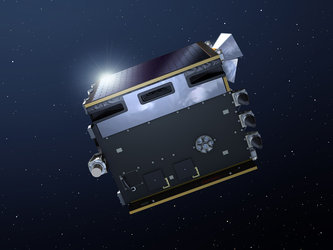Joining ESA’s Proba family
Proba-V is the latest in ESA’s Proba series of minisatellites, among the smallest satellites launched by the Agency – each one less than a cubic metre in volume.
With Proba-V ESA’s small satellite series has finally come of age. Over the last decade ‘Proba’ has become synonymous with small high-performance satellites, designed around innovation. Initially the two previous satellites in the ‘Project for Onboard Autonomy’ series were demonstration missions overseen by the Agency’s Directorate of Technical and Quality Management, intended to give promising technologies an early chance to fly in space.
These satellites were repurposed as operational missions as the high-quality data of their pioneering experimental payloads were recognised by users: the 2001-launched Proba-1 for hyperspectral environmental monitoring and 2009-launched Proba-2 for solar observations and space weather.
Proba-V is different: this mission will start serving as an operational mission as soon as its commissioning is complete, supplying data to an existing – and eagerly waiting – user community.
ESA and the Belgian Federal Science Policy Office, Belspo, worked together to develop a Vegetation follow-on mission. The Proba platform was selected as the best available fit for the redesigned mission, reusing as much heritage as possible from the 2009-launched Proba-2 in order to launch in time for instrument cross-calibration with Spot-5’s Vegetation instrument.















 Germany
Germany
 Austria
Austria
 Belgium
Belgium
 Denmark
Denmark
 Spain
Spain
 Estonia
Estonia
 Finland
Finland
 France
France
 Greece
Greece
 Hungary
Hungary
 Ireland
Ireland
 Italy
Italy
 Luxembourg
Luxembourg
 Norway
Norway
 The Netherlands
The Netherlands
 Poland
Poland
 Portugal
Portugal
 Czechia
Czechia
 Romania
Romania
 United Kingdom
United Kingdom
 Slovenia
Slovenia
 Sweden
Sweden
 Switzerland
Switzerland




























